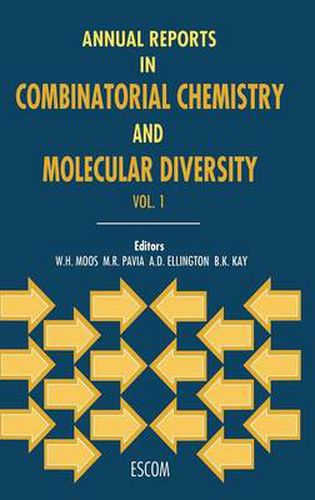Readings Newsletter
Become a Readings Member to make your shopping experience even easier.
Sign in or sign up for free!
You’re not far away from qualifying for FREE standard shipping within Australia
You’ve qualified for FREE standard shipping within Australia
The cart is loading…






This title is printed to order. This book may have been self-published. If so, we cannot guarantee the quality of the content. In the main most books will have gone through the editing process however some may not. We therefore suggest that you be aware of this before ordering this book. If in doubt check either the author or publisher’s details as we are unable to accept any returns unless they are faulty. Please contact us if you have any questions.
Combinatorial chemistry and molecular diversity approaches to scientific inquiry and novel product research and development have been growth fields in the 1990s. For example, in the preparation of drug candidates, the automated, permutational, and combinatorial use of chemical building blocks now allows the generation and screening of unprecedented numbers of compounds. The slogan for the industry seems to be better, faster, cheaper? . Indeed, more compounds have been made and screened in the 1990s than in the preceding 100 years of pharmaceutical research. This volume covers: combinatorial chemistry; combinatorial biology and evolution; and informatics and related topics. Within each section chapters are prepared by experts in the field. For example, Section I: Coverage of mixture pools versus parallel individual compound synthesis; solution versus solid-phase synthesis, analytical tools, and automation. Section II: goes on to highlight selection strategies and library-based evolution, phage display, peptide and nucleic acid libraries. The third section covers databases and library design, high through-put screening, coding strategies versus deconvolutions, intellectual property issues, deals and collaborations, and successes to date.
$9.00 standard shipping within Australia
FREE standard shipping within Australia for orders over $100.00
Express & International shipping calculated at checkout
This title is printed to order. This book may have been self-published. If so, we cannot guarantee the quality of the content. In the main most books will have gone through the editing process however some may not. We therefore suggest that you be aware of this before ordering this book. If in doubt check either the author or publisher’s details as we are unable to accept any returns unless they are faulty. Please contact us if you have any questions.
Combinatorial chemistry and molecular diversity approaches to scientific inquiry and novel product research and development have been growth fields in the 1990s. For example, in the preparation of drug candidates, the automated, permutational, and combinatorial use of chemical building blocks now allows the generation and screening of unprecedented numbers of compounds. The slogan for the industry seems to be better, faster, cheaper? . Indeed, more compounds have been made and screened in the 1990s than in the preceding 100 years of pharmaceutical research. This volume covers: combinatorial chemistry; combinatorial biology and evolution; and informatics and related topics. Within each section chapters are prepared by experts in the field. For example, Section I: Coverage of mixture pools versus parallel individual compound synthesis; solution versus solid-phase synthesis, analytical tools, and automation. Section II: goes on to highlight selection strategies and library-based evolution, phage display, peptide and nucleic acid libraries. The third section covers databases and library design, high through-put screening, coding strategies versus deconvolutions, intellectual property issues, deals and collaborations, and successes to date.